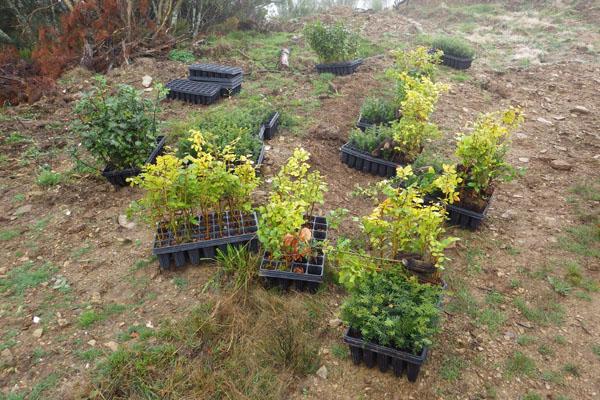Planting work for the LIFE BACCATA project in Galicia
03-07-2020

On October 1st, the Action C3 of the LIFE BACCATA project in Galicia began. This Action consisted of a forest plantation with species characteristic of habitat 9580*. The objective is to increase the area of these species and, consequently,to improve their state of conservation.






The Action is located, like the C2 and C5 Actions of LIFE BACCATA in Galicia, in the Monte Vecinal in Mano Común de Riocereixa (Pedrafita do Cebreiro, Lugo), within the ZEC Os Ancares - O Courel (ES1120001).

The reforestation has been carried out by TRAGSA, associated beneficiary of LIFE BACCATA, using the plants produced by IBADER of the Terra Campus (USC), coordinating partner of the project. The planting was done manually with the help of a planter in points determined by the mechanized ploughing that had been carried out at the end of action C2 during spring 2019. The drowning makes it possible to have a more adequate space for the root development of the species used in the reforestation, enabling their better establishment and reducing the risk of sickness.

The reforestationn has used more than 12,000 plants of the characteristic species of habitat 9580*, which are distributed by species as follows:






The Action is located, like the C2 and C5 Actions of LIFE BACCATA in Galicia, in the Monte Vecinal in Mano Común de Riocereixa (Pedrafita do Cebreiro, Lugo), within the ZEC Os Ancares - O Courel (ES1120001).

The reforestation has been carried out by TRAGSA, associated beneficiary of LIFE BACCATA, using the plants produced by IBADER of the Terra Campus (USC), coordinating partner of the project. The planting was done manually with the help of a planter in points determined by the mechanized ploughing that had been carried out at the end of action C2 during spring 2019. The drowning makes it possible to have a more adequate space for the root development of the species used in the reforestation, enabling their better establishment and reducing the risk of sickness.

The reforestationn has used more than 12,000 plants of the characteristic species of habitat 9580*, which are distributed by species as follows:
| Taxus baccata | 3.300 plants |
| Betula pubescens | 3.200 plants |
| Quercus petraea | 2.600 plants |
| Fagus sylvatica | 1.500 plants |
| Sorbus aucuparia | 800 plants |
| Ilex aquifolium | 570 plants |
| Corylus avellana | 156 plants |
All this plants have been produced by IBADER-USC from genetic material (seeds, cuttings) of local origin (from Riocereixa's own MVMC), thus guaranteeing the use of compatible ecotypes and avoiding genetic contaminations. At present, there are still 3,000 plants in the greenhouse that can be used in the possible replenishment of the trees during the spring of 2020.


Planting has been extended throughout the month of October 2019, so that the reforestation will be completed before the first snowfall of the winter season. The area covered by reforestation has amounted to 15 ha, in which the area occupied by habitat 9580* has been increased.



Planting has been extended throughout the month of October 2019, so that the reforestation will be completed before the first snowfall of the winter season. The area covered by reforestation has amounted to 15 ha, in which the area occupied by habitat 9580* has been increased.




